
Johnna Michelle Holding recounts her adventures in Greenland.
The Ice broke up in Young Sound, northeast Greenland, around 29th of June this year, about two weeks earlier than average We weren’t set to arrive until the 1st of August, a little later than normal due to the unusually late break up of sea ice last year. Those of us who had spent most of the field campaign last year chipping away at ice well into the first week of August were relieved not to have to repeat that experience. But, we were all shocked that there was almost 4 weeks difference in the ice break up between this year and last!
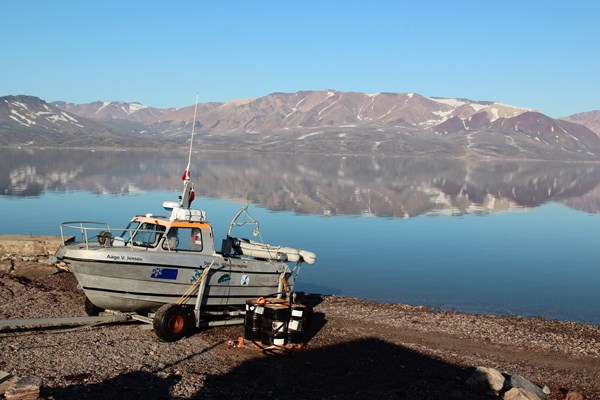
Field Season 2019 (Photo: Katja Laufer)
The team this year consisted of Mie Winding, leader of the MarinBasis programme, Johnna Holding (me), assisting with the MarinBasis programme as well as carrying out some of myown research, and Egon Frandsen and Carl Isaksen providing the most important logistics support and mooring expertise.
The goals this year for the programme were to:
1) Retrieve the moorings funded by INTAROS which were set out last year and redeploy them;
2) Continue our existing monitoring transect further out into the Greenland Sea and deploy new moorings there with the help of the Danish Navy;
3) Establish a new monitoring transect in a neighboring fjord.
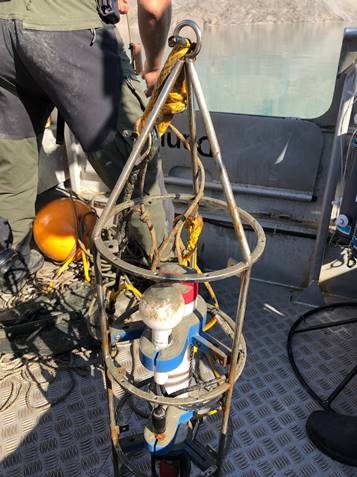
INTAROS funded mooring deployed for one year, too close the mouth of a river apparently! (Photo: Egon Frandsen)
We were able to recover the RBR Concerto mooring funded by INTAROS that was deployed for the first time in 2018 in the inner fjord of Young Sound. This mooring is equipped with a number of sensors, but we were especially interested in the turbidity and light sensors. Apart from being the first year-round measurements of these parameters we have in this fjord, this data will also be helpful in determining the light conditions in the water column after ice breaks up, and its data may be used to refine satellite products. When we recovered the mooring however, we uncovered a small “issue” for the light sensor, it was covered in mud! This, of course, blocked our light measurements, but luckily it appears to only have gotten covered when the rivers started running this year, so we can at least see the data from when the ice broke up until then. Needless to say, we decided to re-deploy the mooring this year a little further from the river’s path ; )
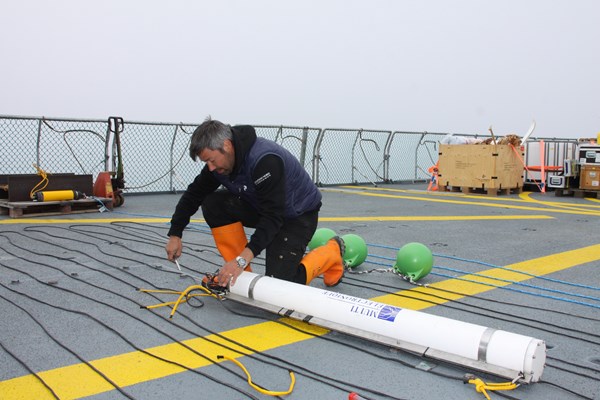
Carl Isaksen preparing moorings on board the Danish Navy Vessel (Photo: Mie Winding)
We also set out this year to extend our current monitoring transects, both further out on the shelf and into unexplored territories. With the help of the Danish Navy we were successful in establishing over a 100 km extension in to the Greenland Sea (red markers in photo below) of our original monitoring transect The Navy was also useful in helping us to deploy 2 more of our larger moorings out in the Greenland Sea. These moorings are a little more difficult to get out with our little aluminum boat, so the assistance of the Navy was very welcome!
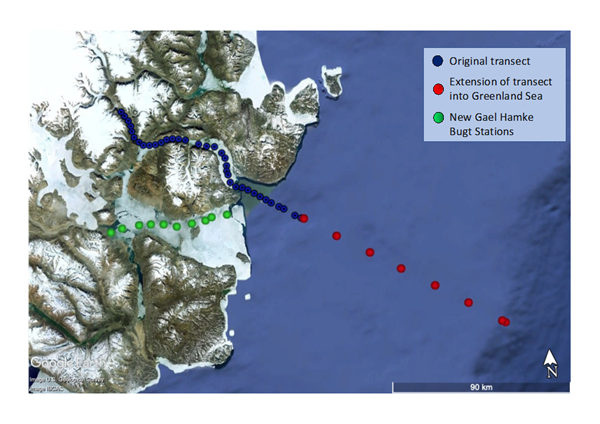
Map of new stations sampled this field season. (Courtesy of Google Earth)
Finally, we spent a full day sailing a little out of our comfort zone into the neighboring Gael Hamke Bugt fjord (green markers in photo above) where we set up a new transect which we hope to visit each year from now on. Gael Hamke Bugt appears to be a deeper silled fjord (~150m) compared to the shallow silled Young Sound (~40m) so we will be interested to see the differences in water column structure between the two fjords.
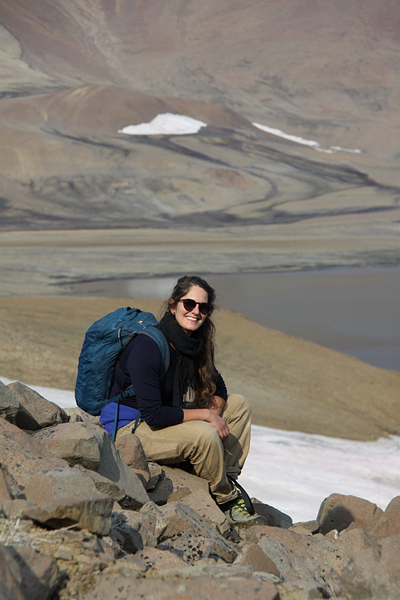
22/10/2019 Johnna Michelle Holding, Aarhus University, Denmark